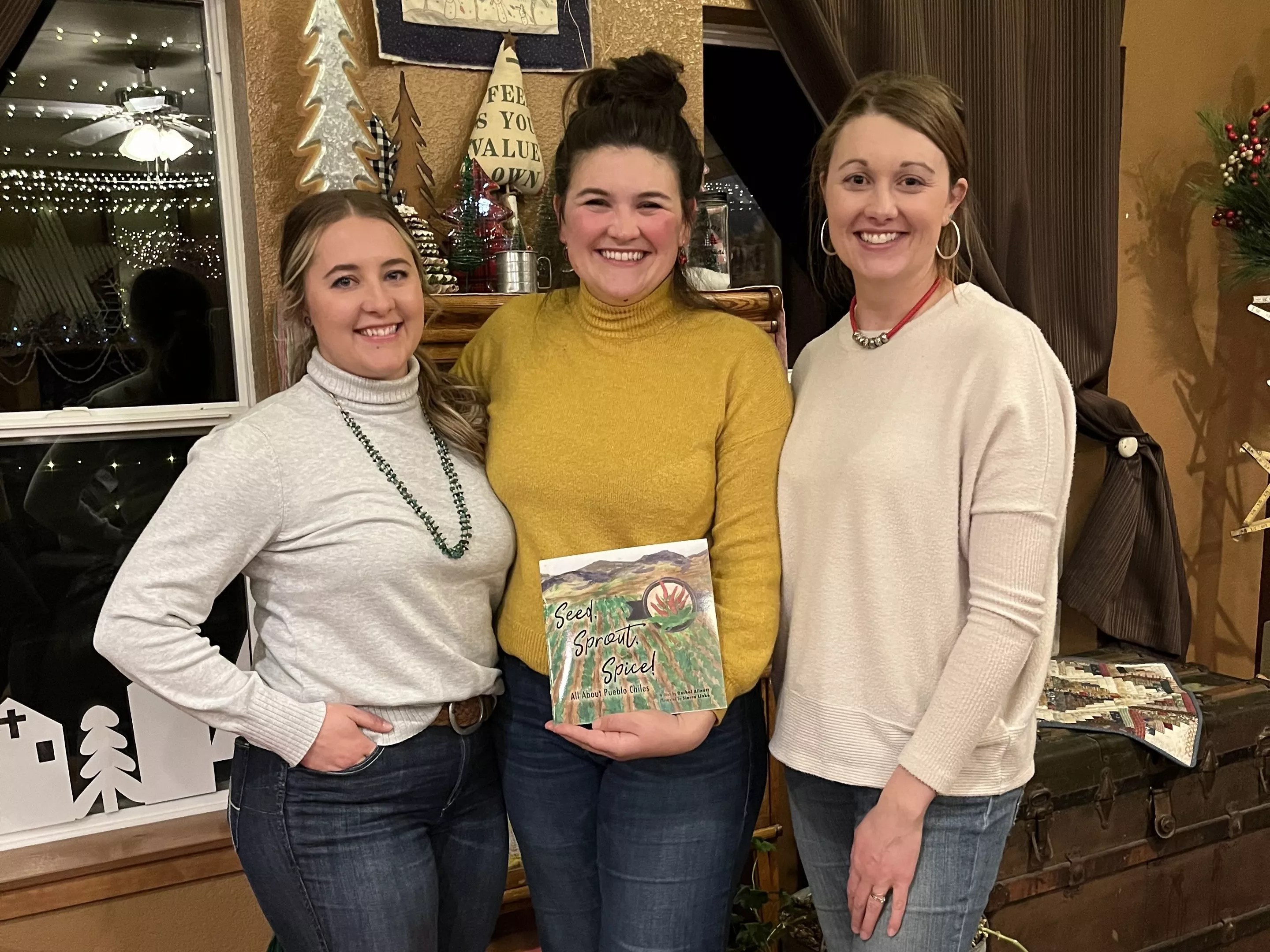
McCall Knecht

Audio By Carbonatix
“We want to expose students and teachers to the vast diversity and importance of Colorado agriculture,” says Jennifer Scharpe, executive director of Colorado Agriculture in the Classroom. At the end of January, the nonprofit will begin distributing educational materials on Pueblo chiles to elementary school classrooms across the state.
Pre-kindergarten through fifth-grade students will receive Seed, Sprout, Spice! All About Pueblo Chiles, a newly published children’s book written by Rachel Allnutt, illustrated by Sierra Linke and published by McCall Knecht, a chile grower closely connected to the Pueblo Chili Growers Association. Classroom kits will also include frozen, diced Pueblo chiles, along with Pueblo chile seeds, planting supplies and complementary lessons.
“We have found that students may not comprehend some of the concepts that they’re learning in their regular curriculum. But if you can connect it to food or water or soil, something that they see and utilize every day, then you start to see students understand those more complex concepts,” comments Scharpe.
She adds that students and teachers especially enjoy the hands-on learning opportunities, and explains how growing a chile plant supplements science curriculums. The program aligns with social studies, too, and especially complements fourth-grade history, in which students learn about Dr. Michael Bartolo, who developed the commercialized Mosco varietal of the Pueblo chile.
Denver, make your New Year’s Resolution Count!
We’re $17,500 away from our End-of-Year campaign goal, with just a five days left! We’re ready to deliver — but we need the resources to do it right. If Westword matters to you, please contribute today to help us expand our current events coverage when it’s needed most.
The program also touches on reading skills. “Students struggle with literacy,” says Scharpe, “but reading something that’s about food or a cool topic like Pueblo chiles? I think students are able to identify with that and are more interested.”

Sierra Linke (left), McCall Knecht and Rachel Allnutt collectively created Seed, Sprout, Spice! All About Pueblo Chiles.
McCall Knecht
Previously, the literacy program has highlighted other Colorado crops and areas of agriculture, including wool production and Palisade peaches, but Scharpe admits that she did not anticipate the amount of excitement around this year’s topic.
Pueblo chiles, not to be confused with Hatch green chiles grown in New Mexico, are popular throughout Colorado. Around Denver, fans of the roasted spicy pepper seek out pop-up stands during the August through October harvest season. In Pueblo, the namesake chile is a source of pride year-round and is commemorated with September’s annual Pueblo Green Chile & Frijoles Festival.
“Pueblo chile growers and the Pueblo community are very excited to see their staple product put on a state spotlight,” says Scharpe. “Our programs cover much of the state, and it’s a pretty even split between urban, suburban and rural communities. We know that the need for agricultural literacy is across the board.”
A surplus of classrooms have already enlisted, representing 135 schools in 40 Colorado counties. Given the demand, Scharpe believes that the program could reach 1,000 classrooms and more than 22,000 students this year. However, the organization’s current grant funding only supports 700 classrooms.
Materials for each classroom cost $52, and the organization hopes to acquire an additional $15,600 in funding to reach its distribution goal. Tax-deductible donations can be made on its website and via Colorado Gives.
For the time being, Colorado Agriculture in the Classroom has started a wait list, and Scharpe urges interested educators to sign up as soon as possible. “The project will start in schools at the end of January and continue through the end of the school year,” she adds. “We let teachers decide when to implement the program based on what works best with their schedules.”
Teachers and parents can also purchase Seed, Sprout, Spice! All About Pueblo Chiles independently via an online order form. Books from previous years’ literacy programs can be purchased at colorado.agclassroom.org.